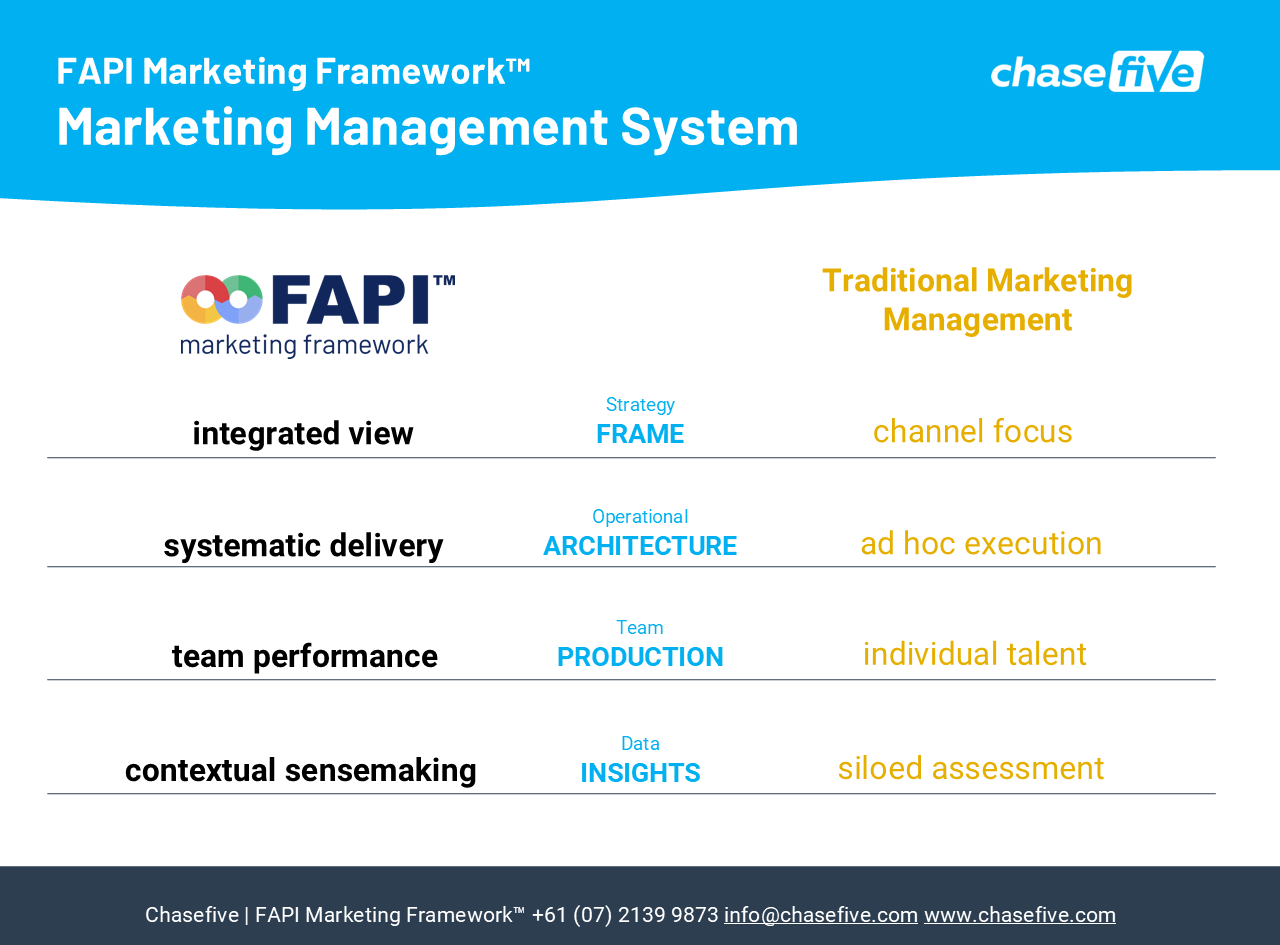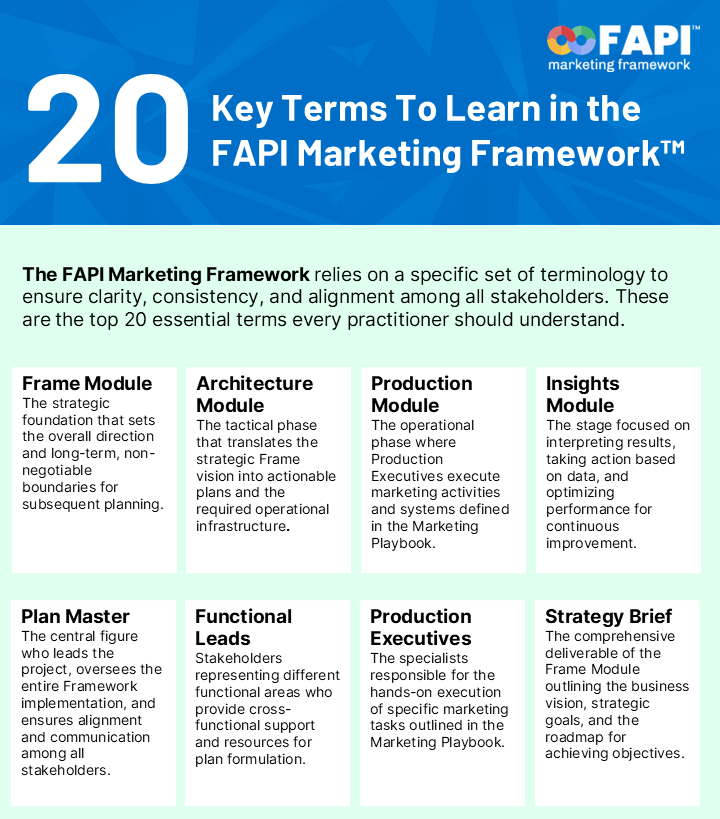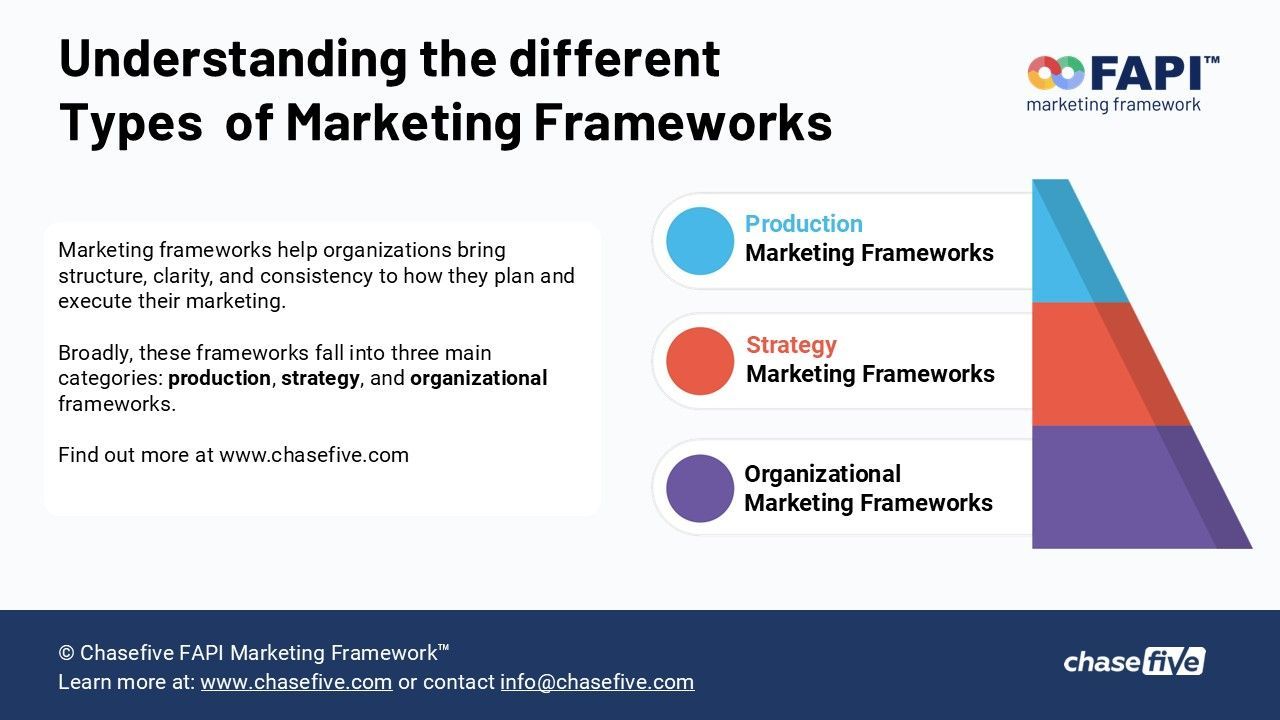Resolving marketing dissatisfaction: Time for CEOs to take a more proactive role in marketing performance.
Anyone fortunate enough to manage a marketing function or be responsible for a marketing budget would confirm the marketing landscape is facing several challenges causing disruption and requiring a new approach to marketing management.
The traditional boundaries between marketing practice and other customer-facing functions have become less clear, and marketing operational complexity is constantly increasing, making it crucial for the businesses to adapt to these new realities.
Amid these dynamic shifts, it's clear from numerous studies and publications that dissatisfaction with marketing efforts is widespread among business leaders. A notable example is a study published by the Harvard Business Review, revealing that 80% of CEOs are not satisfied with the performance of their Chief Marketing Officers (CMOs), citing a lack of trust.
The widespread discontent can be attributed to a multitude of factors. Chief Marketing Officers (CMOs) encounter immense pressure to achieve tangible and measurable results in the evolving marketing landscape. At the same time, business leadership teams face the challenge of effectively integrating marketing into their organizational structure, given the increasingly blurred boundaries between distinct marketing responsibilities in other functional areas.
Exploring the reasons behind businesses' dissatisfaction with marketing.
Frequently cited reasons for the general dissatisfaction with marketing among CEO and business leaders include multiple crucial issues. Among these, a recurrent concern is the lack of quantifiable outcomes, where marketing endeavours struggle to deliver concrete, measurable results demonstrating a clear return on investment.
Misalignment with organizational objectives also ranks high on the list of discontents. Marketing campaigns are frequently said to need to be more closely aligned with broader business goals, leading to frustration and a sense of disconnect.
In addition, inadequate cross-functional collaboration with other business functions often hinders effective marketing planning and execution. Poor interdepartmental integration and a lack of communication can lead to disjointed execution.
Another significant cause of dissatisfaction is the failure of marketing teams to grasp the intricacies and specificity of their respective industries, resulting in messaging and strategies that fall short of resonating with target audiences.
Insufficient ability to adapt to ever-changing market dynamics trends leaves businesses yearning for more agile and responsive marketing efforts that can better address evolving customer preferences and market trends.
Finally, a need for more clarity on scope and competencies especially among production execution teams is a frequently cited reason for lack of efficiency and suboptimal performance.
It's no surprise that the tenure of Chief Marketing Officers is shorter than that of other C-suite roles.
A holistic view of marketing organizational planning.
Successfully integrating business vision and marketing production necessitates the active involvement of the entire organization's leadership and management team throughout the marketing process, from planning to resourcing and execution.
The diagram below, adapted from Jonathan Trevor and Barry Varcoe's alignment test, provides a simple way to evaluate how a marketing plan is aligned with a company's strategy and assess the potential risks and pitfalls.
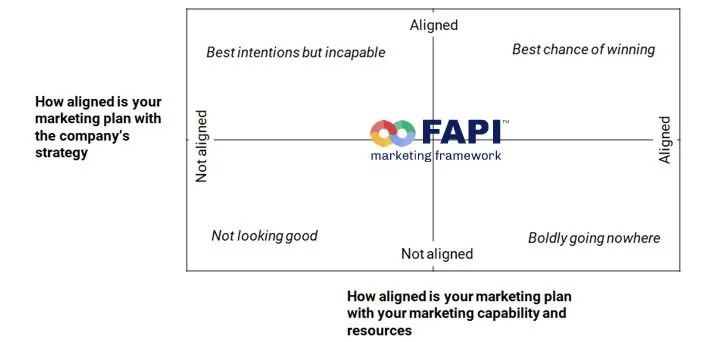
Strategic marketing alignment diagram. Giovannoni, E. (2023). Modern Marketing Architecture: The Official FAPI Marketing FrameworkTM Guidebook. Chasefive.
The alignment diagram emphasizes two clear keystones of marketing success. Firstly, the organization's tactical marketing plans and business plan must be integrated. Secondly, the marketing resources and capability must correspond with the marketing plan.
An anecdotal early-stage litmus test for business leadership teams to determine whether their business and marketing organizations require better integration is when the company tends to consider individual marketing 'big ideas' as solutions to enhance marketing performance rather than viewing the marketing organizational performance as a whole.
Difficulties in aligning business vision with marketing execution.
Many executive teams tend to tackle marketing reactively by responding to immediate needs or ad-hoc opportunities rather than adopting a strategic approach to organizational planning, yet the battle for alignment between business direction and marketing execution is won or lost in the planning stage.
A modern marketing organizational plan needs to be collaborative and coherent, starting with correctly 'encoding' the business vision and objectives in the marketing plans. CEOs and business leadership teams need to take responsibility for leading the process starting with the strategy 'encoding' stage.
The strategy-encoding process stands as a core responsibility of the business leadership team, collaborating closely with the CMO. In the strategy encoding process, the CMO acts as a gatekeeper to identify any gaps or ambiguity in the strategy brief that could pose risks during the execution stage and ensure these are addressed before decoding the strategy into a comprehensive tactical plan.
A classic example of how frequently the process of encoding the strategy is overlooked or misinterpreted is the common practice by businesses of all sizes to dive into marketing production as soon as budgets are approved without first crystallizing the marketing architecture.
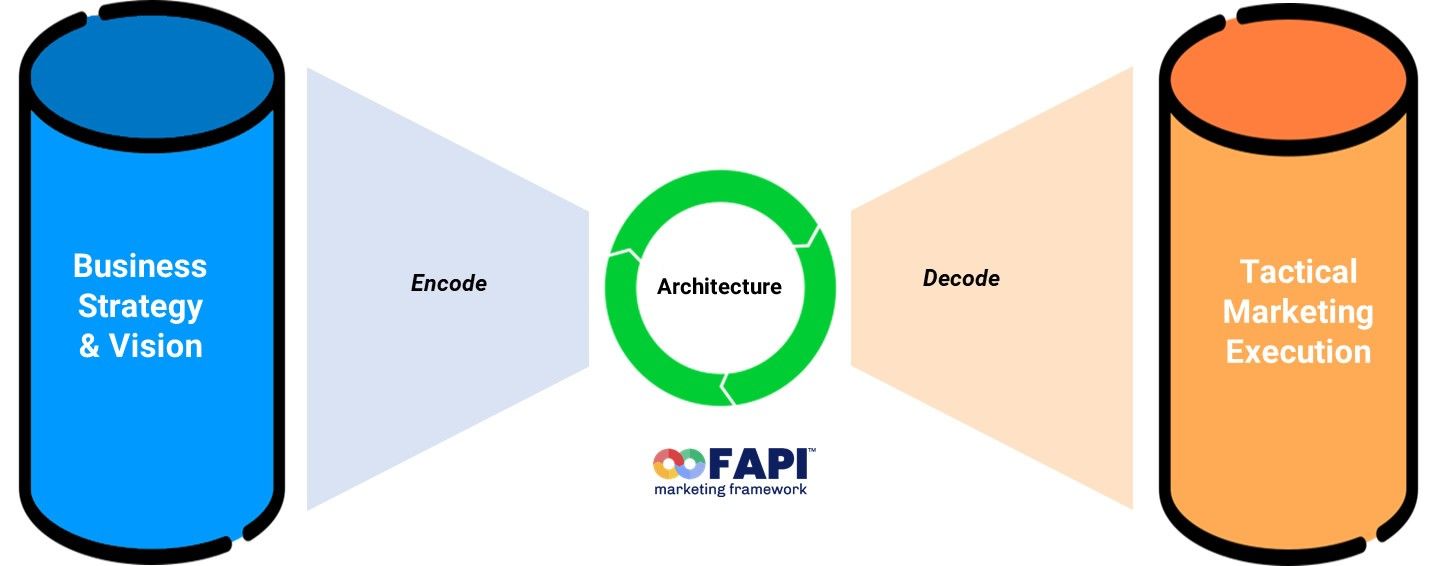
Closing the gap between business strategy and marketing execution.
To effectively translate business strategy into successful tactical marketing activities , a comprehensive end-to-end approach to marketing organizational planning is essential. This process should revolve around key principles that form the foundation for alignment and collaboration. In summary, the keystone requirements can be outlined as follows.
1: Integration.
Integrate all functional leads into the planning process.
It is crucial to involve all key stakeholders in the marketing planning process, including managers from all functional teams, such as sales, product development, customer service, and other relevant departments. Encouraging open communication, resource sharing and responsibility will lead to developing a more cohesive and unified plan.
2: Tactical marketing models.
Adopt a tactical marketing model fit for the business model.
In today's rapidly changing business environment, technology adoption and disruptive business norms have made it difficult to distinguish between different traditional tactical marketing models. Simply relying on standard structures like B2B, B2C, or D2C may not lead to the best alignment between marketing implementation and business goals. The lines between tactical marketing models need to be better defined by identifying how specific target audience behavioural traits and business model characteristics intersect (refer to the FAPI Marketing Framework™ Tactical Marketing Models Matrix).
3: Preparation
Only begin production once the bill of materials is ready.
Starting marketing production without a complete architecture plan and bill of materials can cause significant deviations from the business vision. To mitigate this risk, it's essential to follow a sequential project flow, making sure all execution parameters, such as resource plans, performance indicators, and outcome projections, are clearly defined prior to commencing production.
4: Clarity.
Allocate clear responsibilities, workflows and scope of work.
Poorly defined responsibility allocation during execution can significantly impact production workflows, causing confusion and inefficiencies. All production team members must have a clear understanding of their specific roles and a tactical awareness of the entire marketing plan. Lack of clarity can lead to inconsistent flows resulting in fragmented execution and risking the loss of direction.
5: System thinking.
Interpret insights holistically.
The main aim of marketing data analysis is to predict and control outcomes. However, the complex nature of marketing requires us to understand analytical insights as a whole, focusing on the interrelation of all marketing efforts and understanding correlations rather than breaking marketing activities down into individual isolated parts.
Anyone working in or with marketing would easily recognize real-life scenarios for most of the abovementioned points. The challenge of addressing these issues, even in a small organization, cannot be overstated, and it demands both strong leadership and tactical execution know-how. Yet, this is the expectation for today's modern marketing leaders, who must be astute marketing strategists, competent project managers, and technically savvy specialists.
Placing marketing teams in a position to excel.
A comprehensive marketing planning and organizational framework is a strategic investment. A strong marketing structure not only gives business leadership teams control over the marketing organization but empowers marketing production teams with the necessary resources, direction, and focus to unleash their creativity and innovation, allowing them to concentrate on creating compelling campaigns that truly resonate with the target audience and can yield results, leading to improved outcomes, heightened efficiency, and maximized return on marketing investment (MROI).
Marketing has assumed an increasingly significant role in organizations; however, the workflows and methodologies utilized do not correspond proportionally to the level of responsibility. Marketing lags behind other industries such as manufacturing, engineering, IT, or logistics when it comes to organizational planning. There is no doubt that it is the responsibility of senior leadership teams to address this issue and close the gap between business strategy and marketing execution.
Get in touch to learn more about the FAPI Marketing Framework™

